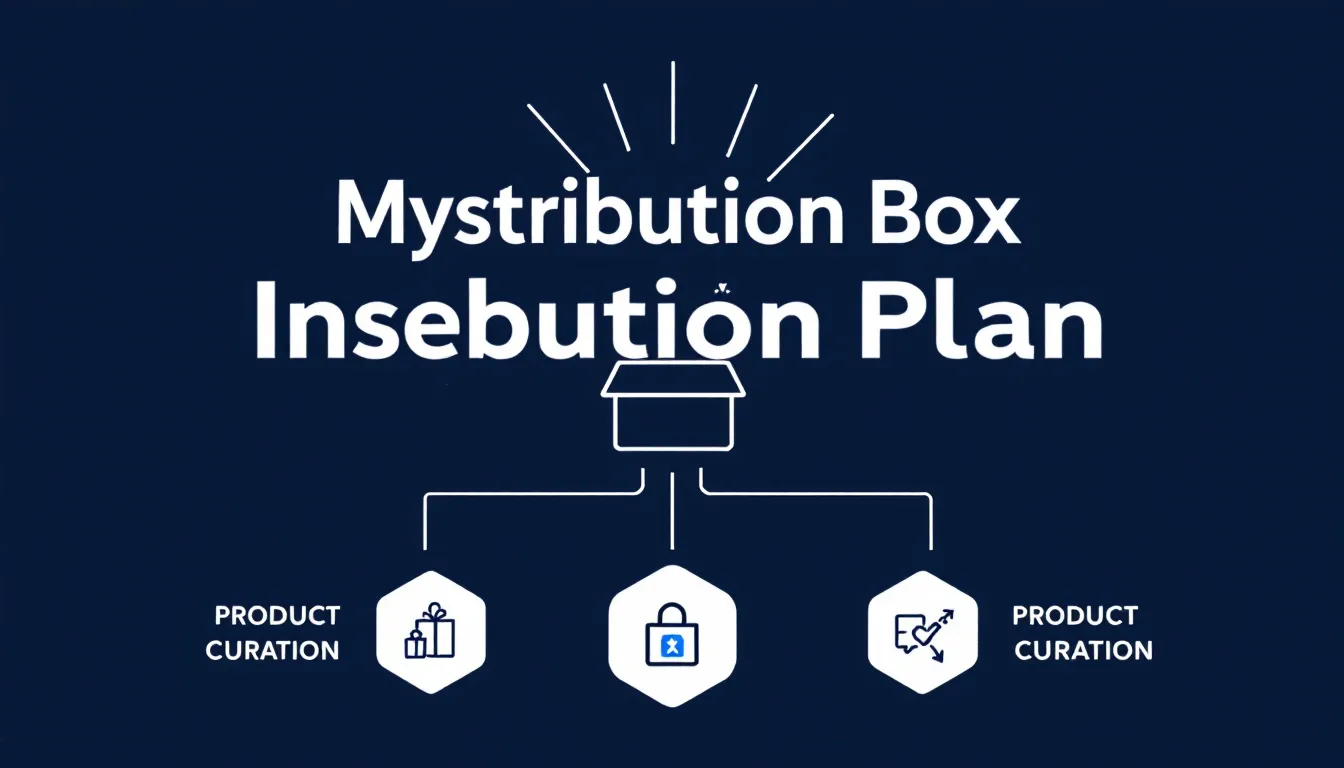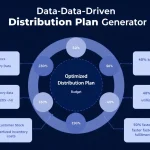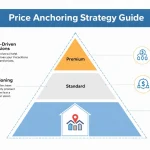Is this tool helpful?
How to Use the Mystery Box & Subscription Distribution Plan Generator Effectively
This tool helps you build a clear, strategic distribution plan for your mystery boxes or subscription services. Fill out each field with precise input to get actionable insights tailored to your business needs.
Field-by-Field Input Guide
- Type of product or service: Enter the main product or subscription you offer. For example, you might use “Organic Spice Sampler” or “Vintage Book Club Subscription”.
- Core brand values: List values that represent your brand personality and goals. Try inputs like “Transparency, Artisanal Craftsmanship, Community” or “Adventure, Quality, Innovation”.
- Target audience description: Describe your ideal customers and their preferences to ensure the plan suits their needs. Examples include “Young parents looking for eco-friendly household products” or “Tech-savvy millennials passionate about fitness gear”.
- Delivery frequency (optional): Select how often you want to send your boxes, such as Weekly, Monthly, Bi-monthly, or Quarterly.
- Target price (USD) (optional): Enter your preferred price point per box or subscription. For example, 39.99 or 79.00.
Understanding the Mystery Box & Subscription Distribution Plan Generator
This distribution plan generator helps you structure your subscription or mystery box service by aligning your product offerings, brand essence, and audience insights into a cohesive plan. It guides you through key elements such as delivery schedules, pricing, and customer engagement, so you can optimize your distribution process and enhance customer satisfaction.
By using this tool, you craft a plan that balances operational efficiency with a memorable customer experience, providing clarity on how best to manage inventory, timing, and brand representation.
Key Areas Covered by the Tool
- Product and service categorization
- Brand value integration in distribution
- Target audience profiling
- Delivery frequency planning
- Pricing strategy alignment
Practical Usage of the Mystery Box Distribution Plan Generator
Simply enter your details in the form to generate a customized distribution plan. The tool processes your inputs and provides a detailed plan focusing on customer engagement, operational flow, and brand consistency.
Sample Use Scenarios
Scenario 1: Art Supply Subscription
- Product type: “Creative Artist Kit”
- Brand values: “Inspiration, Quality, Accessibility”
- Target audience: “Aspiring artists, ages 18-35, seeking monthly creative tools”
- Box frequency: Monthly
- Price range: 29.99
Scenario 2: Gourmet Coffee Discovery
- Product type: “Premium Coffee Sampling Box”
- Brand values: “Sustainability, Authenticity, Flavor Excellence”
- Target audience: “Coffee enthusiasts, 25-45, craving artisanal flavors”
- Box frequency: Bi-monthly
- Price range: 54.00
Core Concepts Behind Mystery Box Distribution Planning
This planning process balances surprise marketing with dependable delivery logistics to ensure customer excitement without sacrificing operational efficiency.
Essential Components
- Curating relevant and appealing products
- Setting an optimal distribution timeline
- Ensuring brand values are reflected in every box
- Engaging customers through anticipation and surprise
- Aligning pricing strategies with market and value
Benefits of Strategic Distribution Planning for Mystery Boxes
Enhancing Customer Experience
- Boosts excitement and anticipation for deliveries
- Strengthens brand loyalty with consistent engagement
- Delivers personalized discovery moments
- Creates meaningful emotional connections
Operational Improvements
- Improves inventory management accuracy
- Creates reliable and predictable revenue flows
- Optimizes resource use for cost savings
- Reduces complexity in fulfillment and logistics
Solving Distribution Challenges with the Generator
Optimizing Inventory Levels
The generator helps estimate your ideal stock levels using this formula:
Optimal Stock Calculation:
$$Optimal\_Stock = (Monthly\_Subscribers \times Buffer\_Factor) + Safety\_Stock$$
Aligning Brand Values with Distribution
The tool also measures how well your brand values match your distribution activities with the following calculation:
Brand Alignment Score:
$$Alignment\_Score = \sum_{i=1}^{n} (Value\_Weight_i \times Implementation\_Factor_i)$$
Best Practices for Implementing Your Distribution Plan
Scheduling Your Distribution Timeline
- Match product curation cycles with delivery dates
- Build in buffer time for quality checks and adjustments
- Prepare contingency plans for delays or disruptions
- Design seasonal themes and product variations
Integrating Core Brand Values
- Tell your brand story through packaging and presentation
- Choose products that clearly reflect your values
- Design touchpoints that reinforce your brand identity
- Develop communication strategies aligned with your values
Optimization Techniques to Enhance Your Subscription Service
Maximizing Customer Engagement
- Calibrate the level of surprise in each box
- Implement consistent feedback loops to learn from customers
- Employ personalization based on preferences and history
- Build community through interactive experiences
Improving Operational Efficiency
- Synchronize supply chain timing with distribution needs
- Apply thorough quality control measures
- Focus on cost-effective sourcing and packaging
- Plan for scalable growth to meet demand increases
Frequently Asked Questions About Mystery Box Distribution Planning
General Questions
Q: How do I choose the best subscription frequency?
Look at how often your audience uses the product, product shelf life, and your fulfillment capabilities. Start small with test groups to find an ideal rhythm.
Q: What product mix works best for mystery boxes?
Aim for roughly 70% familiar favorites and 30% new discoveries. Each box should include a standout item that highlights your brand values.
Q: How do I keep the mystery while satisfying customers?
Use themed sets, customize partially based on preferences, and consistently deliver value even as products vary.
Q: What’s the best approach to scaling subscription services?
Focus on a niche at first, create reliable fulfillment processes, collect customer feedback regularly, and grow cautiously according to demand.
Technical Considerations
Q: How should I handle seasonal variation in my plan?
Develop quarterly themes, adapt product choices to seasonality, and plan your inventory to handle demand fluctuations.
Q: What metrics are most important for tracking success?
Track retention rates, customer satisfaction, delivery punctuality, inventory turnover, and customer lifetime value (CLV).
Q: How can I optimize packaging for various products?
Consider protection needs, sustainability goals, unboxing experience, and shipping costs when designing your packaging.
Advanced Planning Considerations for Growth and Risk Management
Integrating Growth Strategies
- Plan for market expansion
- Diversify your product lines
- Develop new customer segments strategically
- Evolve your value propositions over time
Managing Risks
- Create supply chain redundancies
- Implement strict quality assurance protocols
- Maintain customer satisfaction guarantees
- Plan for operational continuity in disruptions
Important Disclaimer
The calculations, results, and content provided by our tools are not guaranteed to be accurate, complete, or reliable. Users are responsible for verifying and interpreting the results. Our content and tools may contain errors, biases, or inconsistencies. Do not enter personal data, sensitive information, or personally identifiable information in our web forms or tools. Such data entry violates our terms of service and may result in unauthorized disclosure to third parties. We reserve the right to save inputs and outputs from our tools for the purposes of error debugging, bias identification, and performance improvement. External companies providing AI models used in our tools may also save and process data in accordance with their own policies. By using our tools, you consent to this data collection and processing. We reserve the right to limit the usage of our tools based on current usability factors.







